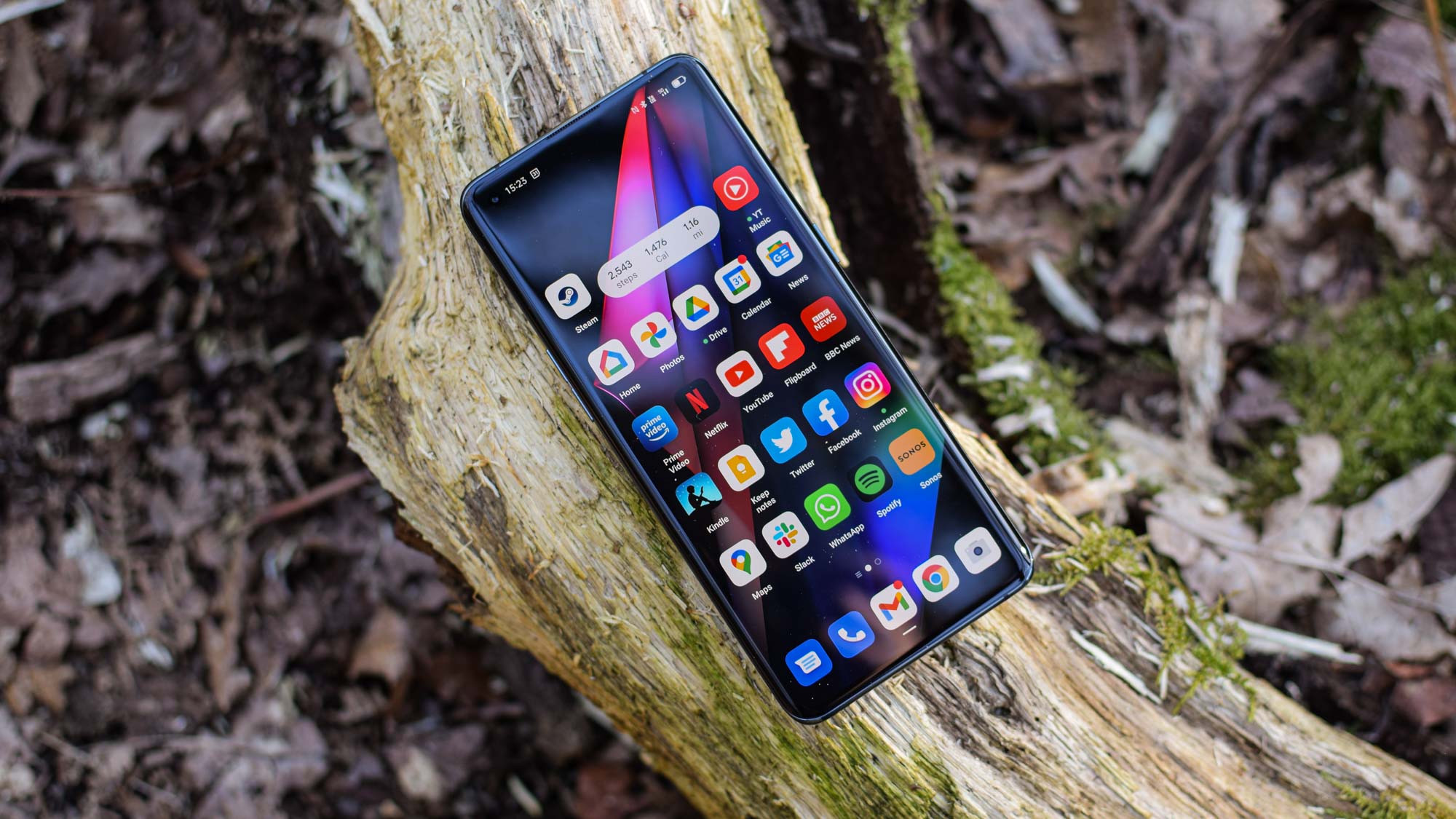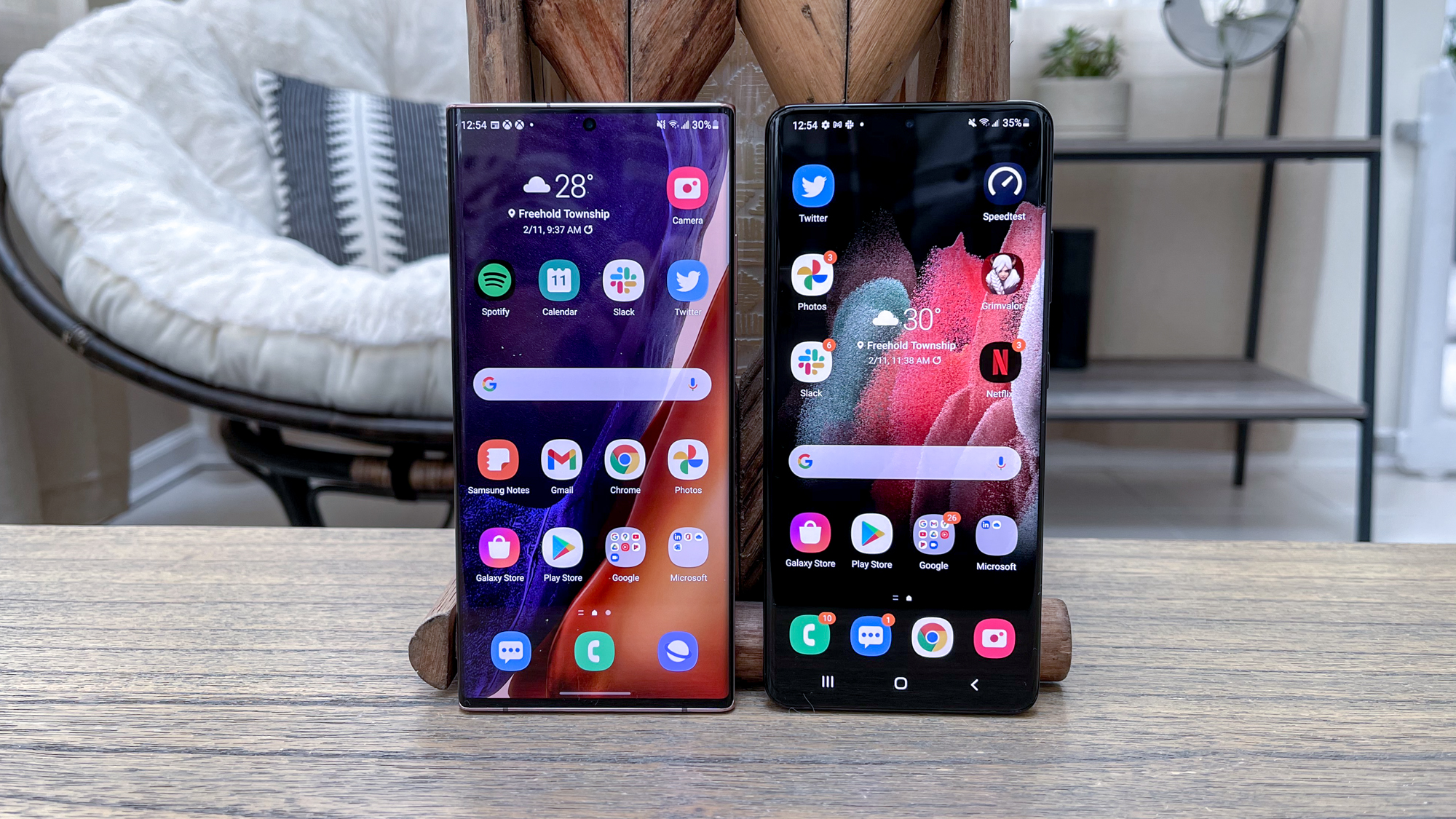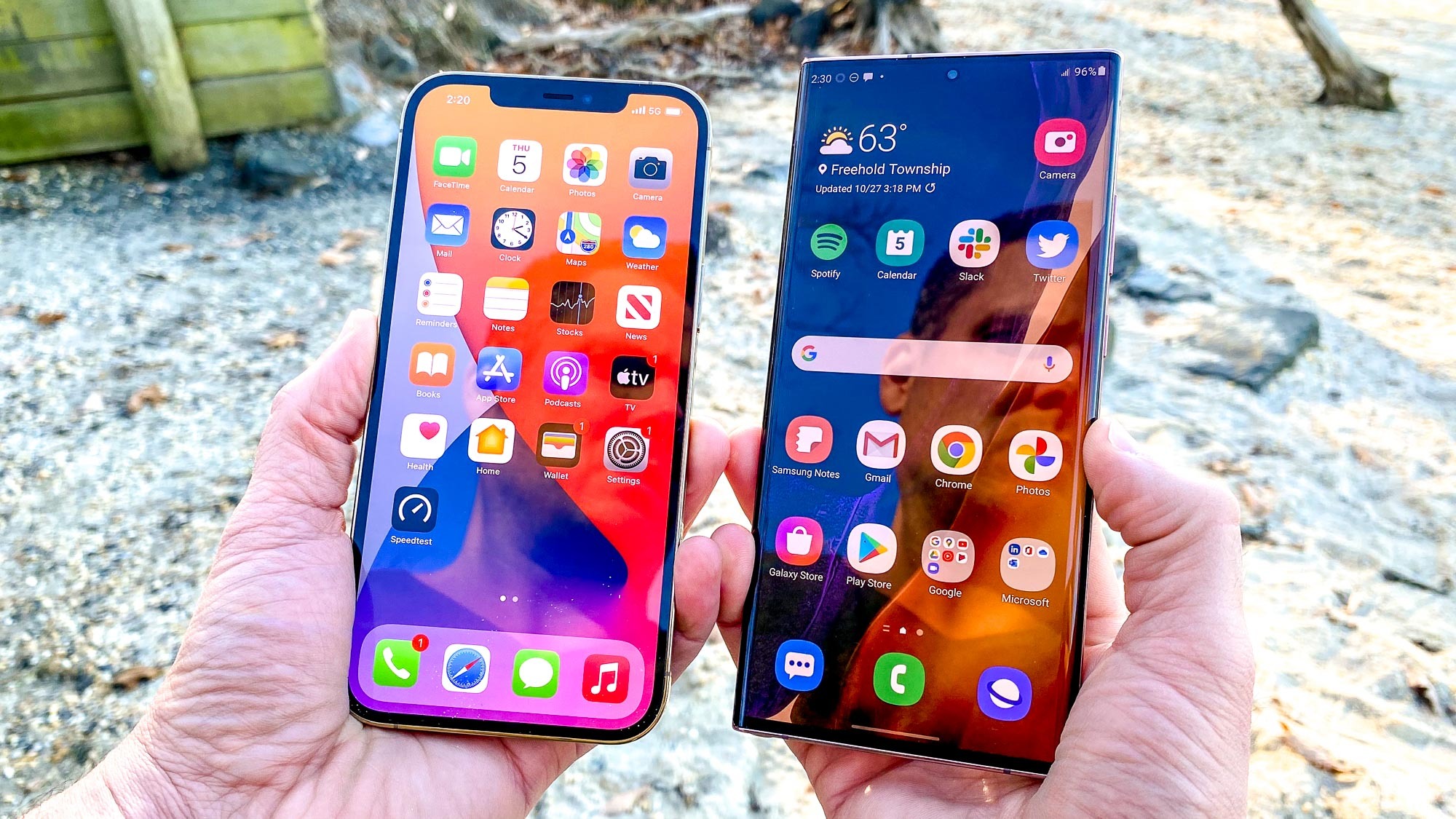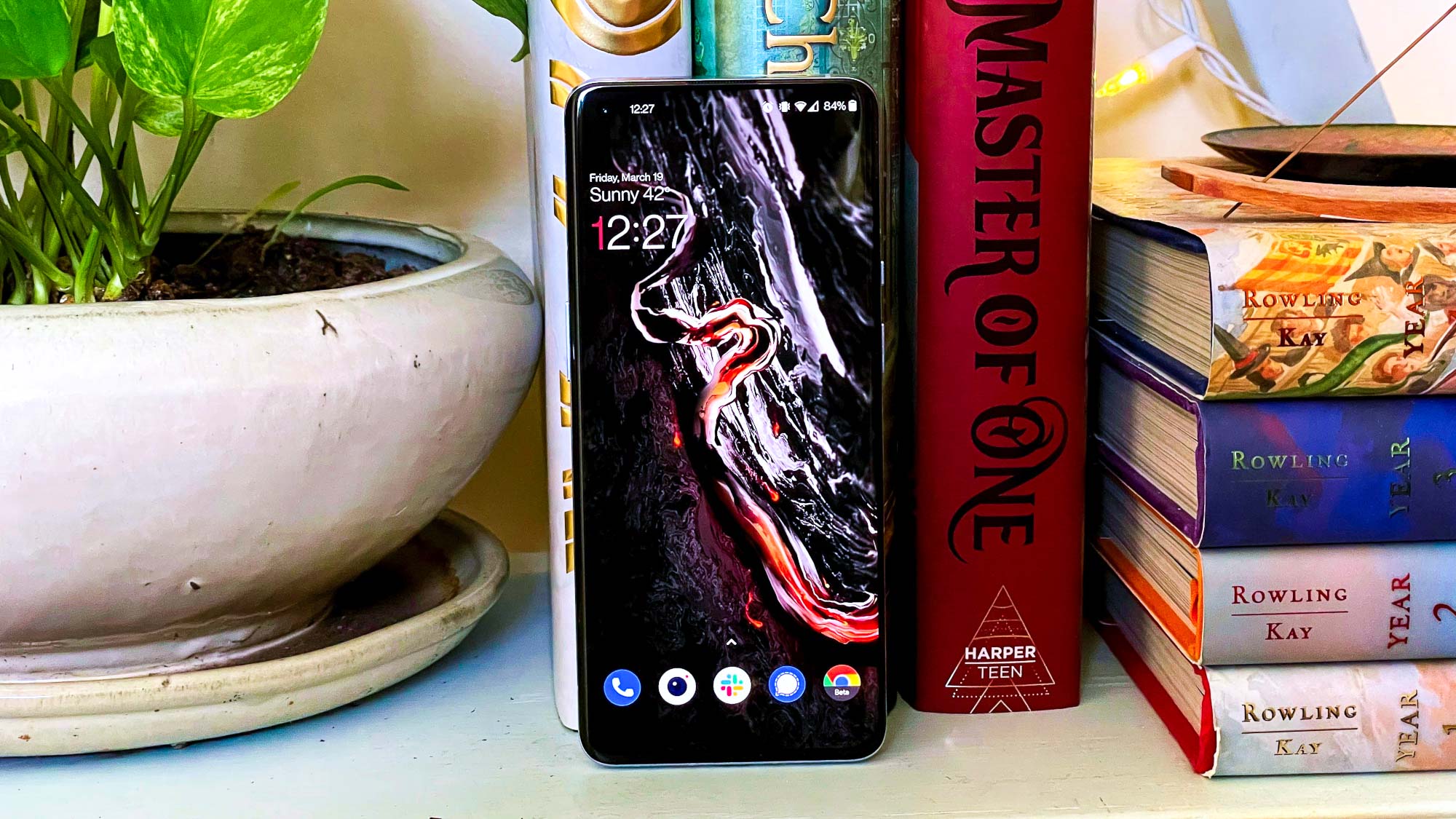What is LTPO? How this tech delivers killer phone displays
LTPO is helping phones like the Samsung Galaxy S21 and OnePlus 9 Pro deliver killer displays without destroying battery life

High refresh rate displays have helped make a lot of mid-range and flagship Android phones feel significantly smoother to use than the standard 60Hz displays still found on most phones, including most notably Apple's iPhone 12 flagships. Use a smartphone that refreshes at 90Hz — or even 120Hz like the Samsung Galaxy S21 and OnePlus 9 Pro do — and you get smoother scrolling and more immersive experiences.
However, 120Hz displays can be rather power-hungry, especially when running at QHD resolutions. And that's where LTPO display tech comes in.
- iPhone 13 release date, price, specs and leaks
- The best big phones you can buy
LTPO displays allow you to have both a high refresh rate and resolution without turning a smartphone into a battery-sucking rectangle of glass and metal. And the tech is becoming increasingly common in 2021’s Android phones.
We first got a proper taste of LTPO displays with the Samsung Galaxy Note 20 Ultra. But now they can be found in all three models in the Galaxy S21 range, as well as the Oppo Find X3 Pro and the newly released OnePlus 9 Pro.
And we expect it to pop up in a lot more phones as the year progresses — including the iPhone 13, which may well adopt the technology when it arrives this fall, as Apple looks to match the leading Android phones with this sought-after feature.
Here’s what you need to know about LTPO and how it'll feature in some of the best phones of the year.
What is LTPO?
LTPO is the snappy acronym that stands for low-temperature Polycrystalline oxide. In short, it allows for a display to dynamically change its refresh rate without needing any additional hardware components to sit between a device’s graphics processing unit and the display controller.
Get instant access to breaking news, the hottest reviews, great deals and helpful tips.
By being able to change the refresh rate of a display on the fly, a device can flip from using power-hungry high refresh rates to lower refresh rates when they aren’t needed, which can help squeeze out more battery life.
Apple developed LTPO technology and uses it in the Apple Watch Series 5 to scale a refresh rate from 60Hz down to 1Hz, thereby helping the smartwatch last longer. So adopting such tech for smartphone displays would help reduce their power consumption.

Currently, a lot of OLED displays in phones use low-temperature polycrystalline silicon (LTPS) in the construction of the thin-film-transistors (TFTs) that form the backplane of a display, effectively providing a lot of the electronics components to run a display. Using LTPS allowed for OLEDs display on smartphones to be more power-efficient, around 20% to 30%, than IPS LCD displays.
However, LTPS panels don’t allow for dynamic refresh rates, unless extra hardware is used, as is the case with the OnePlus 8 Pro and Oppo Find X2 Pro. And other phones can only swap between 120Hz and 60Hz, rather than anything in between or lower.

Display backpanels that use LTPO, on the other hand, have a combination of LTPS TFTs and transistors made from Indium gallium zinc oxide (IGZO). This results in a display backpanel that uses IGZO TFTs for driving the display while LTPS TFTs take care of the switching circuits. All this leads to a more efficient overall display and one that can dynamically change its refresh rate.
All this sounds very promising for future phones, but you may have noticed that phones like the iPhone 12 Pro don't support LTPO displays. Apple doesn't even have a 120Hz smartphone display yet, though that’s rumored to change with future iPhones.
This is because IGZO TFTs are larger than LTPS ones and thus can’t be packed as densely into a display. Given such displays uses a TFT for each pixel, using IGZO transistors would mean compromising on the sharpness of a screen.
But with the latest suite of Android flagship hones, the likes of Samsung and Oppo have found a way to make use of the tech without compromising on screen sharpness.
Samsung's ultra LTPO

As Apple owns the patents to LTPO, Samsung worked on its own display tech that apes LTPO but doesn’t force Samsung to cough up patent fees. And the tech in question is HOP.
Standing for Hybrid-oxide and Polycrystalline silicon, HOP effectively combines a take on LTPO tech with oxide TFTs. And that LTPO tech appeared in the Galaxy Note 20.
But with the Galaxy S21, Samsung has pushed the display envelope further with Samsung Display creating LTPO panels that can reduce the power consumption of OLED displays by 16%. That might not seem a lot but in our Samsung Galaxy S21 Ultra review, we've seen it deliver admirable battery life while still powering a 6.8-inch, 3200 x 1400 resolution screen with a peak brightness of 1,300 nits.

A newcomer to the LTPO mix, the OnePlus 9 Pro, seems to have found the right balance between a fast refreshing display that adjusts on the fly and good battery life. When we tested OnePlus' new flagship with its dynamic display enabled, it lasted for 10 hours, 40 minutes on our demanding battery test. That's well above average for a smartphone and close to landing on our best phone battery life list. Even better, when we set the phone's display to 60Hz, it didn't impact battery life at all.
And there's good news here as Samsung Display makes OLED screen for Apple, and we're expecting it to continue to do so for the iPhone 13 — at least when it comes to this year's Pro models at least.
Given Apple hasn't embraced high refresh rate displays yet, a move to LTPO panels would allow it to leapfrog the displays found in late 2019 and 2020 phones and give the iPhone 13 a display worthy of 2021.
- These are our best Android phones picks

Roland Moore-Colyer a Managing Editor at Tom’s Guide with a focus on news, features and opinion articles. He often writes about gaming, phones, laptops and other bits of hardware; he’s also got an interest in cars. When not at his desk Roland can be found wandering around London, often with a look of curiosity on his face.
